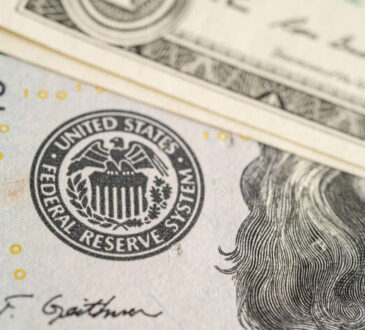
- US job openings fall to lowest in more than 2-1/2 years
- Treasury yields slide, but dollar extends recovery
- Schnabel points to end of ECB’s tightening crusade
- Gold becomes attractive again after hitting $2,010

Dollar defies weak labor data
The dollar traded higher against all but one of the other major currencies on Tuesday, with the only currency holding its ground being the Japanese yen. That said, the dollar’s recovery seems to be running out of steam today, with the and the taking the most advantage of it.
Yesterday, markets seemed to be out of sync, with the dollar staging a recovery, Wall Street closing mixed, but Treasury yields extending their slide and Fed funds futures continuing to suggest around a 70% probability for the Fed to deliver its first quarter-point cut in March and a total of 125bps worth of reductions by the end of 2024.
Treasury yields may have continued their retreat as US job openings for October fell to their lowest in more than 2-1/2 years, another sign of a softening labor market and another validation to investors’ belief that the Fed will cut interest rates sharply next year. There was a negative reaction in the dollar at the time of the release, but the currency was quick to resume its prevailing recovery.
Perhaps traders preferred to continue covering their short positions ahead of Friday’s official employment data, or they may have paid some attention to the ISM non-manufacturing PMI for November, which rose more than expected. Nonetheless, similarly to the manufacturing report, this survey pointed to softening employment, perhaps adding downside risks to Friday’s numbers. Traders may pay some attention to today’s ADP employment report for November, but recent history has shown that the ADP print is far from a reliable predictor of the NFP number.
ECB’s Schnabel prompts traders to bring forth rate cut bets
Although the euro was not yesterday’s biggest loser, it continues to be the main underperformer during the dollar’s latest recovery, with investors ramping up their ECB rate cut bets following the larger-than-expected slowdown in Eurozone inflation. Yesterday, ECB member Isabel Schnabel, who is considered a hawk, said that given the “remarkable” fall in inflation, the ECB could refrain from raising rates further, adding that they should not guide for rates to remain steady through mid-2024.
Although that’s not anything that the markets don’t agree with, her comments encouraged participants to bring forth their rate-cut bets, with a quarter-point reduction now nearly fully priced in for March. Expectations that the ECB will cut interest rates sooner than the Fed may leave the euro vulnerable, even if the dollar resumes its slide against the other major currencies soon.
Aussie rebounds, awaits BoC decision
The aussie lost more than 1% yesterday after the RBA softened its tightening bias and after Moody’s cut their outlook for China, but it is in a recovery mode today despite Australia’s GDP for Q3 coming in lower than expected and the probability for another rate hike at the RBA’s February gathering sliding to 10% from 20% yesterday.
Today, the central bank torch will be passed to the BoC, which is expected to hold rates steady. With inflation in Canada coming down faster than expected and data pointing to economic contraction in Q3, policymakers could signal that interest rates are at their peak, which could hurt the loonie.
Gold extends retreat but rebounds from key support
Gold also defied the further slide in Treasury yields, and continued pulling back yesterday, seemingly driven more by the recovery in the US dollar. That said, after testing the key zone of $2,010, the metal rebounded, extending its recovery today. With investors expecting massive rate cuts next year, an employment report validating their view on Friday could allow gold bulls to add to their positions as the opportunity cost for holding the precious metal continues to decrease.
In the equities sphere, Wall Street closed mixed yesterday, with only the Nasdaq recording some gains. Combined with the slide in Treasury yields, this confirms the notion that the Nasdaq is more sensitive to interest-rate speculation and suggests that there may be room for further upside should investors continue to anticipate several rate cuts for next year.




